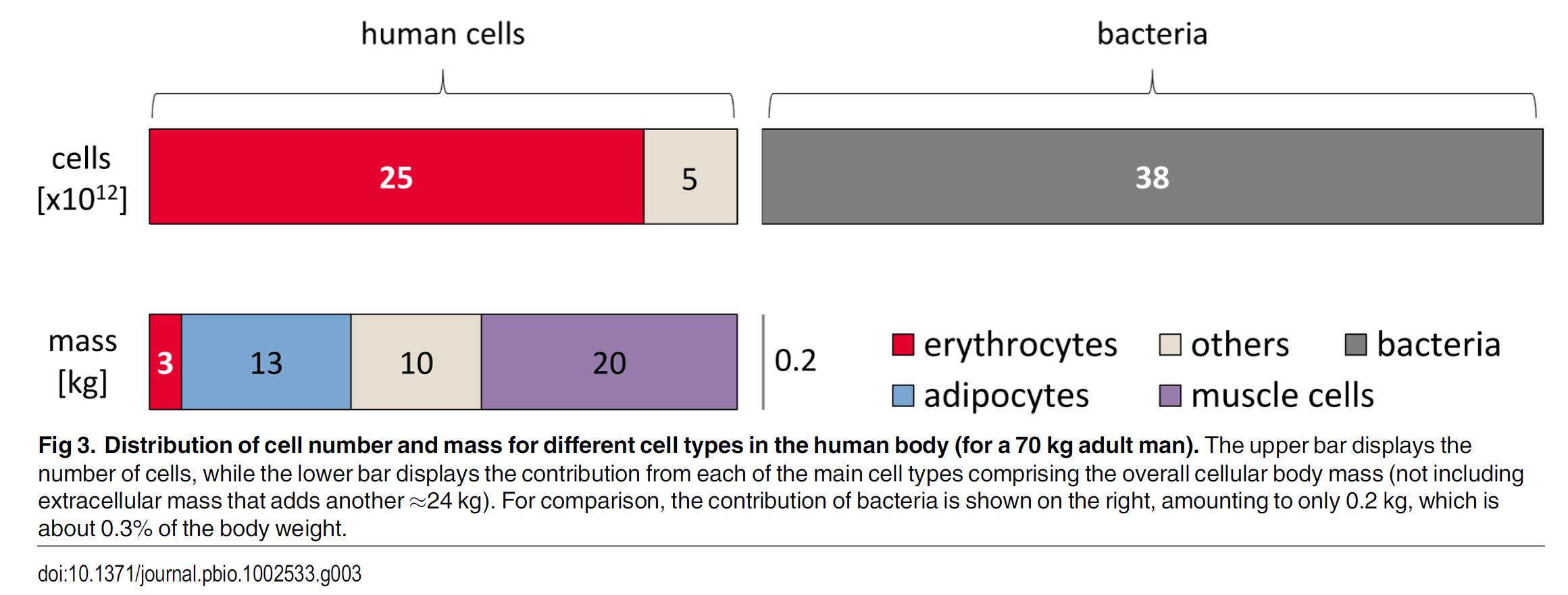Bacteria vs human cells: how many are in our body?
Nowadays, the microbiome is a hot topic and there has been a misconception about the bacteria vs human cells ratio. More and more scientists become aware of the importance of having a healthy microbiome and the impact it can have on our overall health. But have you ever wondered how many bacteria you really have in your body compared to the number of your own cells?
For the past years, when searching for this question, you would have found that the estimated ratio for bacteria vs human cells is 10:1. In other words, we are 10 times more bacteria than human. But, as you probably suspect by now, isn't completely accurate.
More people have been questioning this and a recent article has given a new estimation. Let’s clarify first that it is currently impossible to determine the exact ratio of bacterial vs human cells. However, we can have a better estimation and it definitely sounds more realistic than the previous one.
Where does this 10:1 ratio come from?
The 10:1 myth comes from a publication in 1972 from the microbiologist Thomas Luckey.1 He estimated that our gut contains around 1014 bacteria, by assuming that there are 1011 bacteria in a gram of feces, and scaling it up according to the one-liter volume of the gastrointestinal tract. In reality, bacteria are not evenly spread in the body, which makes this way of measuring not the most accurate. But fear not, we've got a new estimation!
New Estimated Ratio
In a review of 2016, Milo and colleagues came up with an updated and more scientifically accurate estimate of the bacteria vs human cells ratio: 38 trillion microbial cells (3.8x1013) versus 30 trillion human cells (3x1013), which leads to a 1.3:1 ratio.2 The researchers also mention that this ratio comes with an uncertainty of 25% and a variation of 53% over the population, as these numbers vary depending on age, sex, and body measurements. Interestingly, the contribution of bacteria accounts for only 200g, which is about 0.3% of the body weight of the average 70 kg male.
From this it was concluded that the bacteria vs human cells ratio in our body is closer to 1:1 than 1:10. This new estimation is still pretty amazing and does not mean that microbiota has less importance for our health. Continue reading for more in-depth information on how researchers actually came to this new estimation.
The maths behind the bacteria vs human cells ratio
Let's dive into the numbers and get technical here. We start by looking at how many human cells we have in our body.
Even though fat and muscle cells account for most of the weight of our body, red blood cells are the ones found in larger numbers (24.9 trillion cells = 1012). The average 70 kg male has a blood volume of 4.9L. Taking into account that the mean of red blood cells is 5x1012 cells/L, we can assume that he has 2.5x1013 red blood cells. By adding the numbers of the rest of the cell types, the authors of this review came to an estimate of 3x1013 human cells in our body.2
How many bacterial cells reside in us?
Bacteria are found in much higher concentrations in the colon (end of the large intestine) than in other parts, which means you can’t just take a fecal sample and say it’s representative of the entire gastrointestinal tract (like Luckey did). Thanks to the current research techniques, we now know that there are about 0.9x1011 bacteria/g wet stool. The writers assume that bacteria found in the stool is a representation of the colon, which has a volume of 0.4 L, giving a total of 3.8x1013 bacteria in the colon.2 Since the colon is where most bacteria are found, the writers use this number for the comparison. View the below model for comparison.

This calculation is much more solid than the estimation used to get to the original 1:10 bacteria vs human cells myth.